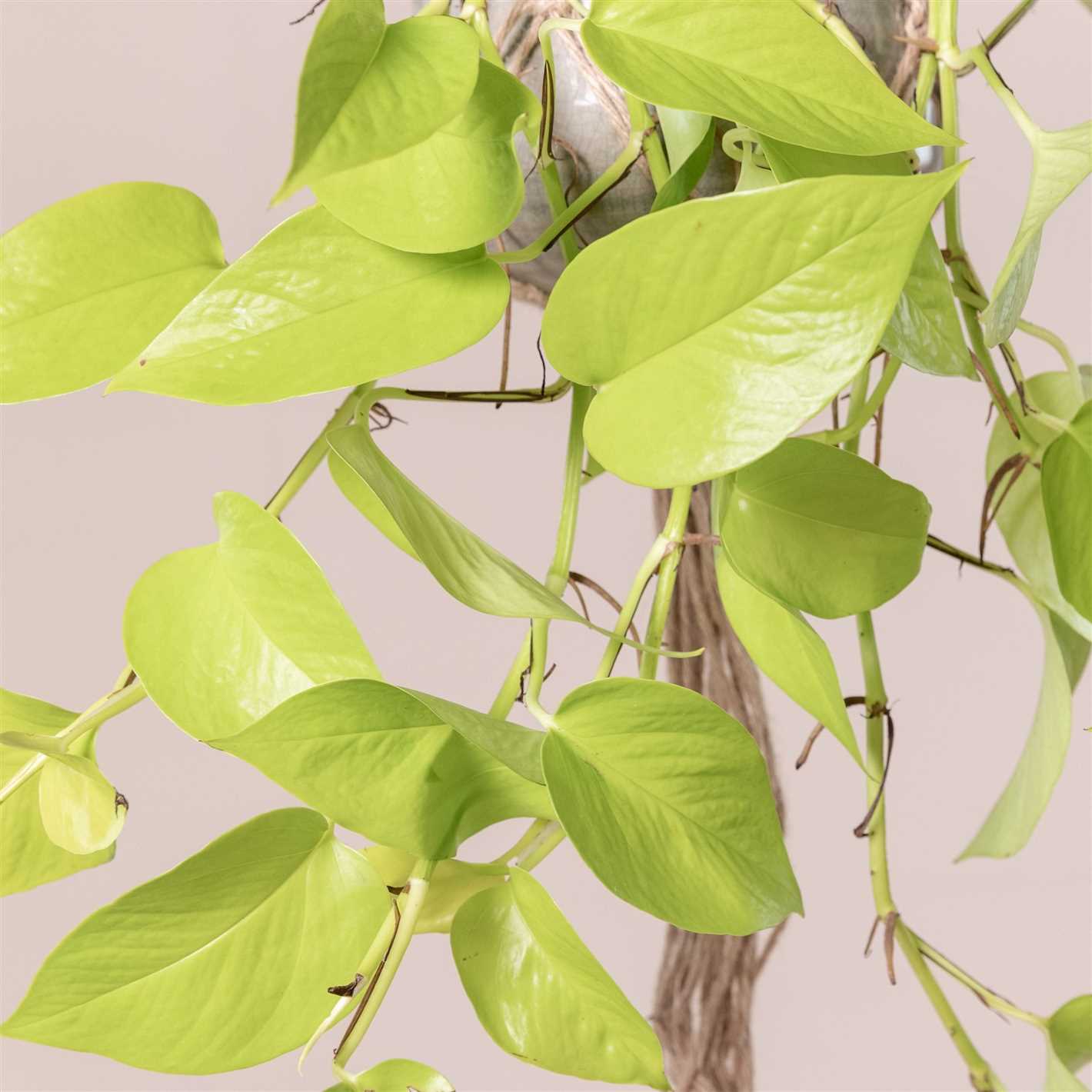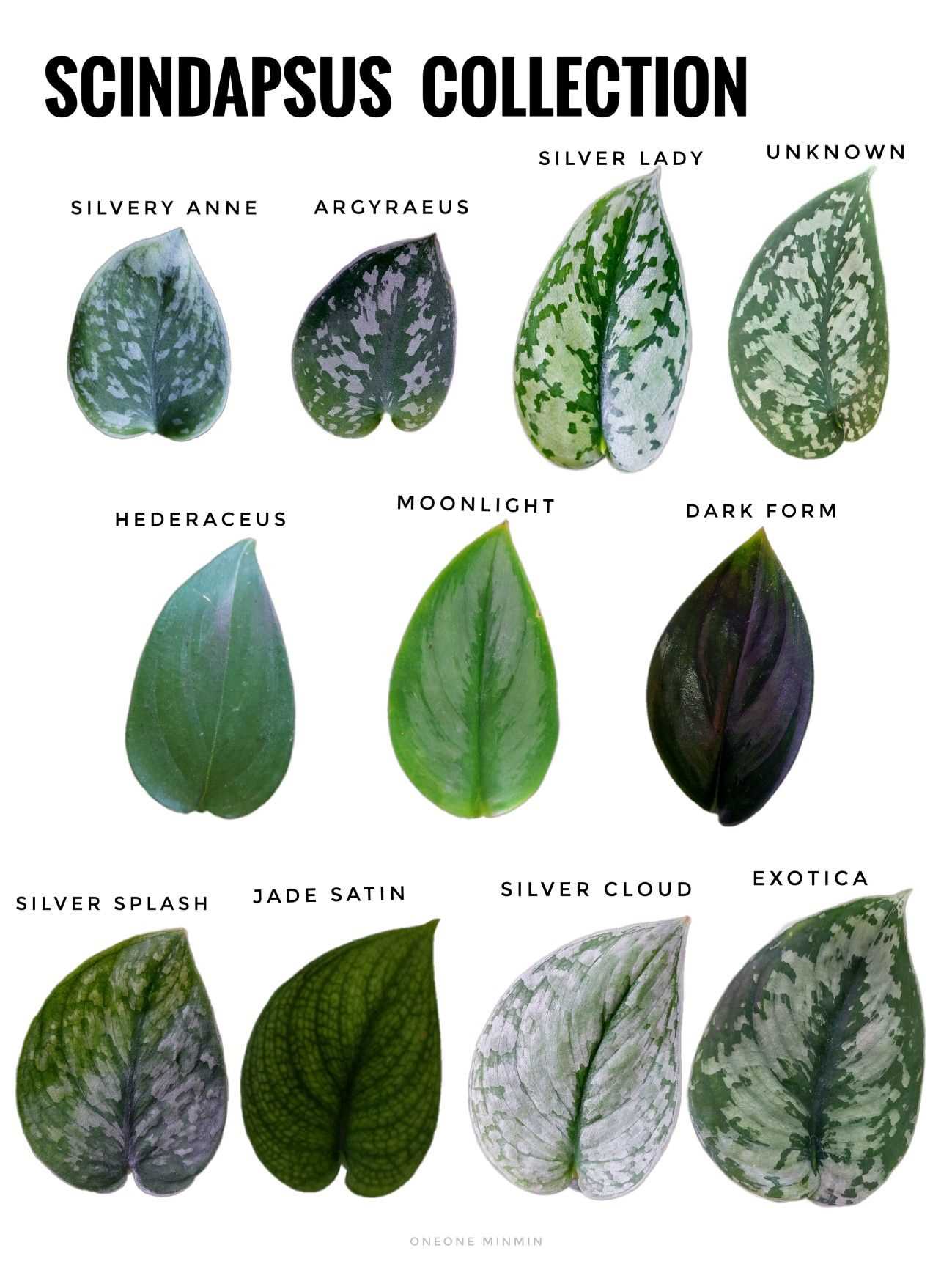- Scindapsus Species and Varieties
- Scindapsus Care and Maintenance
- Light Requirements
- Watering
- Temperature and Humidity
- Soil and Fertilizer
- Pruning and Propagation
- Pests and Diseases
- Light Requirements for Scindapsus
- 1. Indirect light
- 2. Low light tolerant
- 3. Avoid direct sunlight
- 4. Artificial lighting
- 5. Light-affected leaf color
- 6. Regularly rotate the plant
- Watering and Humidity for Scindapsus
- Watering:
- Humidity:
- Additional Tips:
- Soil and Fertilizer for Scindapsus
- Soil Requirements
- Choosing the Right Fertilizer
- Fertilizing Frequency
- Additional Tips
- Propagation of Scindapsus
- 1. Stem Cuttings
- 2. Air Layering
- 3. Division
- 4. Water Propagation
- Common Issues and Pests with Scindapsus
- 1. Root Rot
- 2. Yellowing Leaves
- 3. Stunted Growth
- 4. Spider Mites
- 5. Mealybugs
- 6. Fungus Gnats
- 7. Leaf Browning
- 8. Leaf Drop
- Q&A:
- What is Scindapsus?
- How do you take care of Scindapsus plants?
- Is Scindapsus a good indoor plant?
- Can Scindapsus be grown in water?
- What are the benefits of having Scindapsus plants in your home?
- How often should I water my Scindapsus plant?
- Video: SCINDAPSUS plant varieties & how to tell them apart: scindapsus pictus, treubii, rares, etc.
If you’re a plant lover looking for a beautiful and easy-to-care-for addition to your indoor garden, look no further than the Scindapsus. Also known as the pothos or devil’s ivy, Scindapsus is a versatile and low-maintenance plant that can thrive in a variety of conditions. Whether you’re a beginner or an experienced plant parent, this ultimate guide will provide you with all the information you need to know about caring for Scindapsus.
Origins and Varieties:
Scindapsus belongs to the Araceae family and is native to the tropical forests of Southeast Asia. There are several popular varieties of Scindapsus, each with its unique characteristics and growth habits. The most common variety is the Scindapsus aureus, which features heart-shaped leaves with variegated patterns of green and yellow. Other variations include Scindapsus pictus, with silver-veined foliage, and Scindapsus treubii, which has elongated leaves and a trailing growth habit.
Light and Temperature:
Scindapsus is a highly adaptable plant and can tolerate a wide range of lighting conditions. However, it thrives in bright, indirect light. Avoid direct sunlight, as it can scorch the leaves and cause them to turn yellow. As for temperature, Scindapsus prefers a warm and humid environment, with temperatures ranging between 60°F and 85°F (15°C – 29°C). It can tolerate slightly cooler temperatures but should be kept away from drafts and cold air.
Tip: If you notice the leaves of your Scindapsus turning pale or losing their variegation, it may be a sign that your plant is not getting enough light.
Watering and Humidity:
When it comes to watering, Scindapsus prefers evenly moist soil, but it’s important not to overwater or let it sit in waterlogged soil. Allow the top inch of soil to dry out before watering again. As for humidity, Scindapsus enjoys high humidity levels, but it can still thrive in average room humidity. You can increase humidity by placing a tray of water near the plant or by using a humidifier.
Scindapsus Species and Varieties
Scindapsus is a genus of plants that belong to the family Araceae. It comprises several species and varieties, each with its own unique characteristics and growth habits. Here are some of the most popular species and varieties of Scindapsus:
- Scindapsus pictus: Also known as the Satin Pothos, this variety is characterized by its glossy, heart-shaped leaves with silver-green patterns. It is a trailing plant that is often grown as a hanging plant.
- Scindapsus aureus: Commonly known as the Golden Pothos or Devil’s Ivy, this variety has heart-shaped leaves with bright green and yellow variegation. It is a popular choice for indoor gardening due to its ability to thrive in low light conditions.
- Scindapsus treubii: Also known as the Silver Philodendron, this variety has elongated, deeply lobed leaves with silver markings. Its cascading growth habit makes it a great choice for hanging baskets or as a trailing plant.
- Scindapsus moonlight: This variety, as the name suggests, features leaves with a striking, moonlight-like silvery hue. It is a compact plant with a bushy growth habit, making it a perfect choice for small spaces or tabletop display.
In addition to these popular species and varieties, there are many hybrid forms of Scindapsus available in the market. These hybrids often exhibit a combination of traits from different species, resulting in unique foliage patterns and growth habits.
Scindapsus species and varieties are easy to care for and are known for their ability to adapt to a wide range of growing conditions. They can thrive in bright, indirect light, but can also tolerate low light conditions. They prefer well-draining soil and require moderate watering, allowing the top inch of soil to dry out between waterings.
With their beautiful foliage and ease of care, Scindapsus species and varieties are a popular choice for indoor gardening and are sure to add a touch of greenery to any space.
Scindapsus Care and Maintenance
Light Requirements
Scindapsus plants thrive in bright, indirect light. They can tolerate low light conditions, but their growth may slow down. Avoid exposing the plant to direct sunlight as it can cause leaf burn.
Watering
The watering needs of Scindapsus plants vary depending on the season and environmental conditions. Water the plant when the top inch of soil feels dry to the touch. It’s important not to overwater the plant as it can lead to root rot. Allow the excess water to drain out of the pot to prevent waterlogging.
Temperature and Humidity
Scindapsus plants prefer temperatures between 65°F (18°C) and 85°F (29°C). They can tolerate slightly cooler temperatures, but avoid exposing them to temperatures below 50°F (10°C). These plants thrive in high humidity environments, so misting the leaves regularly or placing the plant on a tray with water and pebbles can help increase humidity levels.
Soil and Fertilizer

Scindapsus plants prefer well-draining soil that retains some moisture. A mix of peat moss, perlite, and regular potting soil can create an ideal growing medium. Fertilize the plant once a month during the spring and summer with a balanced houseplant fertilizer. Reduce the frequency to every 2-3 months during the fall and winter.
Pruning and Propagation

Prune Scindapsus plants to control their size and shape. Remove any yellow or brown leaves, as these are usually a sign of damage or disease. Scindapsus can be propagated through stem cuttings. Simply cut a healthy stem just below a leaf node and place it in a jar of water or moist soil until it develops roots.
Pests and Diseases
Scindapsus plants are generally resistant to most pests and diseases. However, they can occasionally be affected by spider mites, mealybugs, or scale insects. Regularly inspect the leaves for any signs of pests and treat them accordingly using insecticidal soap or neem oil.
| Light | Watering | Temperature | Humidity | Soil | Fertilizer |
|---|---|---|---|---|---|
| Bright, indirect light | Allow top inch of soil to dry out between waterings | 65°F (18°C) – 85°F (29°C) | High humidity | Well-draining soil mix | Monthly during spring and summer, every 2-3 months during fall and winter |
- Provide bright, indirect light
- Water when the top inch of soil is dry
- Maintain temperatures between 65°F – 85°F
- Increase humidity levels with misting or pebble tray
- Use well-draining soil mix
- Fertilize monthly in spring and summer, every 2-3 months in fall and winter
- Prune to control size and shape, propagate through stem cuttings
- Inspect for pests regularly and treat as needed
Light Requirements for Scindapsus
Scindapsus plants are relatively easy to care for, and one important aspect of their care is providing the right amount of light. Light is essential for the growth and development of these plants, but it is crucial to strike the right balance to prevent damage.
1. Indirect light
Scindapsus plants thrive in bright, indirect light. Direct sunlight can scorch the leaves and cause them to turn yellow or brown. Therefore, it is best to place your scindapsus in a location where it can receive bright, filtered light. An east-facing window or a few feet away from a south or west-facing window is ideal.
2. Low light tolerant
While scindapsus plants prefer bright, indirect light, they can also tolerate low light conditions. They are well-suited for offices or rooms with minimal natural light. However, it’s important to note that too much shade can impact their growth and make them leggy.
3. Avoid direct sunlight
Direct sunlight can cause damage to the leaves of scindapsus plants. If you notice the leaves turning yellow or brown, it may be a sign of sunburn. To protect your scindapsus from direct sunlight, you can use sheer curtains or blinds to filter the light or move the plant to a slightly shadier location.
4. Artificial lighting
If your scindapsus doesn’t receive enough natural light, you can supplement it with artificial lighting. LED grow lights or fluorescent lights placed a few inches above the plant can provide the required light intensity. Keep in mind that scindapsus plants still need a period of darkness, so avoid leaving the lights on 24/7.
5. Light-affected leaf color
The color of the leaves can also be an indicator of light conditions. Scindapsus plants typically have darker green leaves in low-light conditions and lighter green leaves with more variegation in brighter light. However, do not solely rely on leaf color as other factors such as variegation pattern can also influence leaf coloration.
6. Regularly rotate the plant
To ensure even growth and prevent the plant from leaning towards the light source, make sure to rotate your scindapsus every few weeks. This will help all sides of the plant receive adequate light and promote balanced growth.
Overall, providing bright, indirect light is essential for the health and well-being of scindapsus plants. Finding the right balance and adjusting the light conditions as needed will help your scindapsus thrive and grow into a beautiful and lush plant.
Watering and Humidity for Scindapsus
Proper watering and humidity levels are essential for the health and well-being of your Scindapsus plant. Here are some guidelines to help you successfully maintain the moisture levels and humidity requirements for your Scindapsus:
Watering:
- Check the moisture level of the soil before watering. Stick your finger about an inch deep into the soil – if it feels dry, it’s time to water.
- Water the plant thoroughly until water drains out from the bottom of the pot. This ensures that the entire root system receives moisture.
- Avoid letting the plant sit in standing water, as it can lead to root rot. Empty the saucer or tray under the pot after watering.
- During the growing season (spring and summer), water your Scindapsus regularly, allowing the top inch of the soil to dry out between waterings.
- In the dormant season (fall and winter), water less frequently, allowing the top half of the soil to dry out between waterings.
Humidity:
- Scindapsus plants thrive in high humidity levels. Ideal humidity for Scindapsus is between 50% to 70%.
- If the air is dry in your environment, you can increase humidity by misting the leaves with water once or twice a week.
- Placing a tray of water near the plant or using a humidifier in the room can also help maintain higher humidity levels.
Additional Tips:
- Avoid overwatering your Scindapsus, as it can lead to root rot and other moisture-related issues.
- Always use well-draining soil that retains some moisture but allows excess water to flow through.
- Consider using a moisture meter to accurately monitor the moisture levels in the soil.
- Adjust your watering and humidity routine according to seasonal changes and the specific needs of your Scindapsus plant.
Following these watering and humidity guidelines will help ensure a healthy and thriving Scindapsus plant.
Soil and Fertilizer for Scindapsus
When it comes to growing healthy and thriving Scindapsus plants, choosing the right soil and providing adequate fertilizer is essential. Here’s everything you need to know about soil and fertilizer for your Scindapsus plant.
Soil Requirements
Scindapsus plants thrive in well-draining soil that is rich in organic matter. A mixture of peat moss, perlite, and potting soil is a good choice for providing the right texture and drainage. It is important to avoid using heavy soils that retain water for extended periods as this can cause root rot.
If you prefer to make your own soil mix, a ratio of 1 part peat moss, 1 part perlite, and 2 parts potting soil is a good starting point. This will ensure that the soil retains some moisture while allowing excess water to drain away.
Choosing the Right Fertilizer
Scindapsus plants benefit from regular fertilization, especially during the growing season in spring and summer. A balanced, water-soluble fertilizer with equal amounts of nitrogen, phosphorous, and potassium is ideal for promoting healthy growth and vibrant foliage.
Before applying any fertilizer, make sure the soil is moist. This will prevent the roots from burning. Follow the instructions on the fertilizer packaging for the correct dilution ratio. Generally, a weekly or bi-weekly application of a diluted fertilizer solution during the growing season is recommended.
Fertilizing Frequency

During the active growing season, which typically spans from late spring to early fall, regular fertilization is essential to provide the necessary nutrients for Scindapsus plants. However, during the dormant period in winter, it is best to reduce or completely stop fertilization as the plant’s growth slows down.
Monitor your plant’s growth and adjust the fertilizing frequency accordingly. If the leaves appear pale or show signs of nutrient deficiency, increase the frequency of fertilization. On the other hand, if you notice excessive foliage growth with minimal root development, reduce the frequency of fertilization.
Additional Tips
- When fertilizing, avoid getting the fertilizer on the foliage as this can cause burn and damage.
- Always dilute the fertilizer according to the instructions to prevent harming the plant’s roots.
- Consider using organic fertilizers, such as compost or worm castings, for a more sustainable and environmentally friendly option.
- Regularly check the moisture level of the soil and adjust watering and fertilizing accordingly.
By providing the right soil and regular, balanced fertilization, you can ensure that your Scindapsus plants thrive and display their stunning foliage for years to come.
Propagation of Scindapsus
Scindapsus plants can be easily propagated through various methods, including:
1. Stem Cuttings

One of the most common methods of propagating Scindapsus is through stem cuttings. Here’s how to do it:
- Select a healthy stem from the mother plant.
- Cut the stem just below a node, ensuring that it is at least 4-6 inches long.
- Remove the lower leaves to expose the node.
- Place the cutting in a container filled with well-draining potting mix.
- Keep the soil lightly moist and place the container in a warm and bright location.
- After a few weeks, the cutting will develop roots and can be potted into a separate container.
2. Air Layering
Air layering is another effective method for propagating Scindapsus. Here’s how it can be done:
- Select a healthy stem and make a small incision on the stem, just below a node.
- Apply some rooting hormone to the area to encourage root development.
- Wrap the incision with moist sphagnum moss and cover it with plastic wrap.
- Secure the moss and plastic wrap in place with tape or a twist tie.
- Keep the moss moist by spraying it with water regularly.
- After a few weeks, roots will start to develop from the incision.
- Once the roots are well-established, carefully cut the stem below the roots and pot it in a separate container.
3. Division
Scindapsus plants can also be propagated through division. Here’s how:
- Carefully remove the mother plant from its container.
- Inspect the roots and identify natural divisions or separate clumps of stems.
- Gently separate the divisions, ensuring that each division has its own roots attached.
- Pot each division in a separate container filled with well-draining potting mix.
- Water the divisions thoroughly and place them in a warm and bright location.
4. Water Propagation
Water propagation is a simple method for propagating Scindapsus. Here’s how to do it:
- Select a healthy stem cutting and place it in a container filled with water.
- Keep the stem cutting in a bright location, but away from direct sunlight.
- Change the water every week to prevent the growth of bacteria and algae.
- After a few weeks, the cutting will develop roots.
- Pot the cutting into a container filled with well-draining potting mix.
Whichever method you choose, it’s important to provide the new plants with proper care and maintenance to ensure their growth and development. With the right conditions, Scindapsus can easily be propagated and multiplied, allowing you to enjoy these beautiful plants in different areas of your home or garden.
Common Issues and Pests with Scindapsus
1. Root Rot
One of the most common issues with Scindapsus is root rot, which occurs when the roots are exposed to excessive moisture for a prolonged period. This can be caused by overwatering or poor drainage. To prevent root rot, make sure to water your plant only when the top inch of soil feels dry and provide adequate drainage for the pot.
2. Yellowing Leaves
If you notice yellowing leaves on your Scindapsus, it is likely a sign of overwatering or nutrient deficiency. Check the soil moisture levels and adjust your watering schedule accordingly. Additionally, consider fertilizing your plant with a balanced houseplant fertilizer to provide it with necessary nutrients.
3. Stunted Growth
Stunted growth in Scindapsus can be attributed to various factors, including insufficient light, lack of nutrients, or overcrowding. Make sure your plant is getting enough bright, indirect light, provide it with regular fertilization, and consider repotting if it has outgrown its current container.
4. Spider Mites
Spider mites are a common pest that can infest Scindapsus. These tiny pests can cause yellow or discolored leaves, webbing, and overall decline in plant health. To treat spider mites, isolate the affected plant, rinse the leaves with water, and use a horticultural soap or neem oil spray to control the infestation. Regularly inspect your plant for any signs of pests and take action immediately if detected.
5. Mealybugs
Mealybugs can also be a problem for Scindapsus. These small, cotton-like insects feed on the plant sap and can cause stunted growth, yellowing leaves, and overall weakening of the plant. To get rid of mealybugs, remove them manually with a cotton swab dipped in rubbing alcohol or use an insecticidal soap. Regularly monitor your plant for any signs of mealybug infestation.
6. Fungus Gnats
Fungus gnats are small black flies that are attracted to the moist soil of Scindapsus plants. They lay their eggs in the soil, and the larvae feed on the roots, potentially causing damage to the plant. To control fungus gnats, allow the soil to dry out between waterings, use yellow sticky traps to catch the adult flies, and consider applying a biological control like beneficial nematodes.
7. Leaf Browning
If the tips or edges of the leaves on your Scindapsus start browning, it could be a sign of low humidity or excessive direct sunlight. Increase humidity levels by misting the leaves or placing a tray of water near the plant. Move the plant to a location with indirect sunlight to prevent further leaf browning.
8. Leaf Drop
Leaf drop in Scindapsus can occur due to various reasons, including overwatering, underwatering, drastic temperature changes, or pest infestation. Assess the conditions and care routine for your plant to identify the potential cause and make necessary adjustments. If the problem persists, consult a plant specialist or horticulturist for further assistance.
| Issue/Pest | Symptoms | Treatment |
|---|---|---|
| Root Rot | Wilting, yellowing leaves | Improve drainage, reduce watering |
| Yellowing Leaves | Yellow leaves, leaf drop | Adjust watering, fertilize |
| Stunted Growth | Small leaves, lack of new growth | Increase light, fertilize, repot if necessary |
| Spider Mites | Yellow leaves, webbing | Isolate plant, rinse leaves, use insecticidal soap |
| Mealybugs | Cotton-like masses on leaves, stunted growth | Remove manually, use insecticidal soap |
| Fungus Gnats | Small black flies, larvae in soil | Allow soil to dry, use sticky traps, beneficial nematodes |
| Leaf Browning | Browning tips or edges | Increase humidity, reduce direct sunlight |
| Leaf Drop | Leaf loss | Assess conditions, adjust care routine |
Q&A:
What is Scindapsus?
Scindapsus is a type of climbing vine that belongs to the Araceae family. It is also known as devil’s ivy or pothos and is native to Southeast Asia.
How do you take care of Scindapsus plants?
To take care of Scindapsus plants, you should place them in well-draining soil and provide them with bright, indirect light. Water the plant when the top inch of soil feels dry and fertilize it every 2-4 weeks during the growing season. Regularly trim the plant to encourage bushier growth.
Is Scindapsus a good indoor plant?
Yes, Scindapsus is a great indoor plant as it can tolerate a wide range of light conditions and is relatively easy to care for. It can help purify the air by removing toxins and is known for its ability to thrive in low-light environments.
Can Scindapsus be grown in water?
Yes, Scindapsus can be propagated in water. Simply place a stem cutting in a jar of water and wait for roots to develop before transferring it to soil. It is important to change the water regularly to avoid the buildup of bacteria.
What are the benefits of having Scindapsus plants in your home?
Having Scindapsus plants in your home can improve air quality by removing toxins such as formaldehyde and benzene. They can also add a touch of greenery to your space and create a calming and relaxing atmosphere.
How often should I water my Scindapsus plant?
You should water your Scindapsus plant when the top inch of soil feels dry. Overwatering can lead to root rot, so it’s important to let the soil dry out slightly between waterings. Avoid letting the plant sit in standing water as this can also cause root problems.
Video:
SCINDAPSUS plant varieties & how to tell them apart: scindapsus pictus, treubii, rares, etc.







